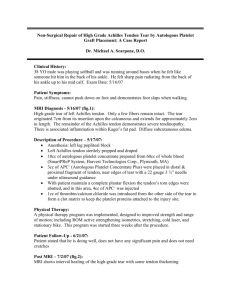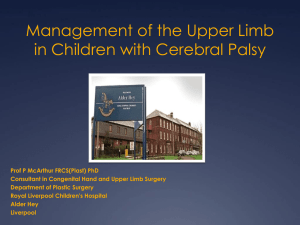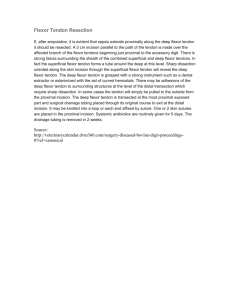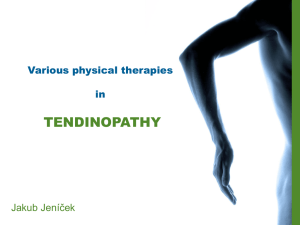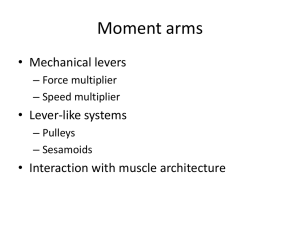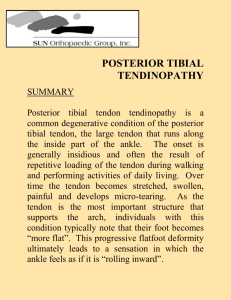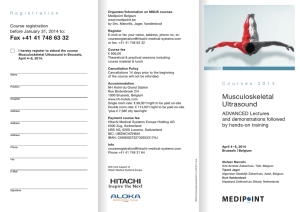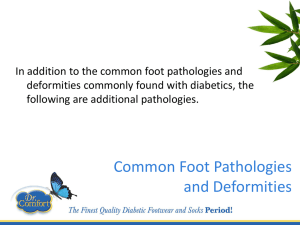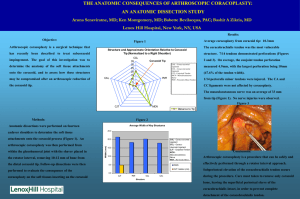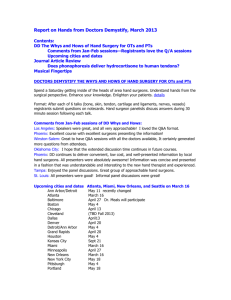Treating Achilles tendinopathy using dry needling and autologous
advertisement
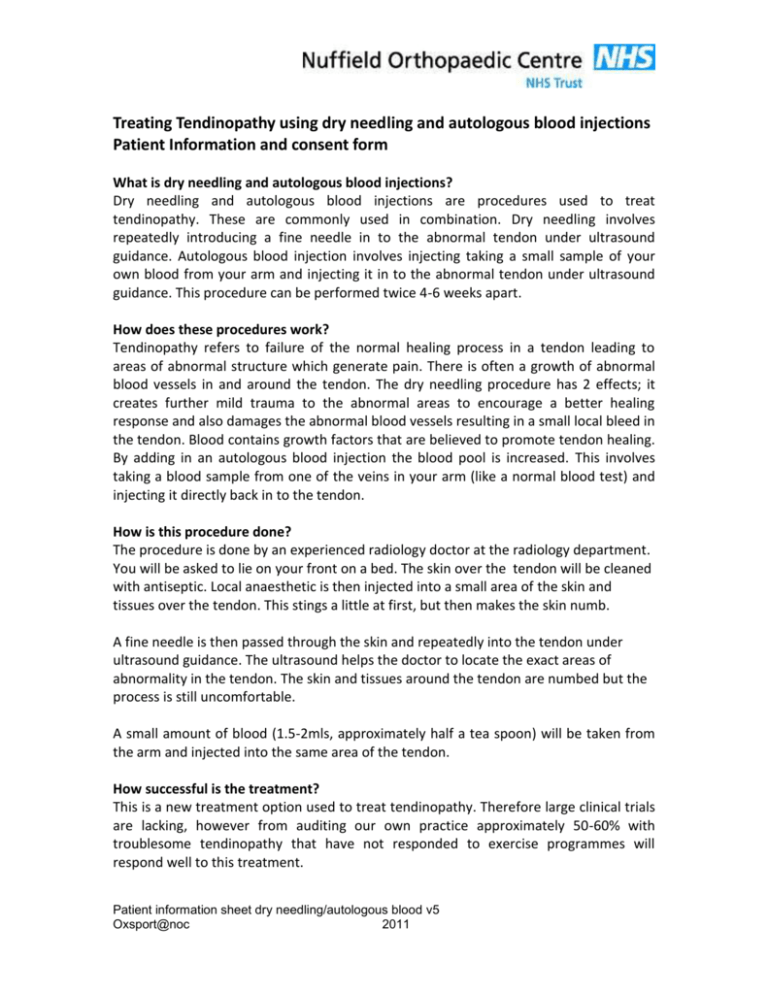
Treating Tendinopathy using dry needling and autologous blood injections Patient Information and consent form What is dry needling and autologous blood injections? Dry needling and autologous blood injections are procedures used to treat tendinopathy. These are commonly used in combination. Dry needling involves repeatedly introducing a fine needle in to the abnormal tendon under ultrasound guidance. Autologous blood injection involves injecting taking a small sample of your own blood from your arm and injecting it in to the abnormal tendon under ultrasound guidance. This procedure can be performed twice 4-6 weeks apart. How does these procedures work? Tendinopathy refers to failure of the normal healing process in a tendon leading to areas of abnormal structure which generate pain. There is often a growth of abnormal blood vessels in and around the tendon. The dry needling procedure has 2 effects; it creates further mild trauma to the abnormal areas to encourage a better healing response and also damages the abnormal blood vessels resulting in a small local bleed in the tendon. Blood contains growth factors that are believed to promote tendon healing. By adding in an autologous blood injection the blood pool is increased. This involves taking a blood sample from one of the veins in your arm (like a normal blood test) and injecting it directly back in to the tendon. How is this procedure done? The procedure is done by an experienced radiology doctor at the radiology department. You will be asked to lie on your front on a bed. The skin over the tendon will be cleaned with antiseptic. Local anaesthetic is then injected into a small area of the skin and tissues over the tendon. This stings a little at first, but then makes the skin numb. A fine needle is then passed through the skin and repeatedly into the tendon under ultrasound guidance. The ultrasound helps the doctor to locate the exact areas of abnormality in the tendon. The skin and tissues around the tendon are numbed but the process is still uncomfortable. A small amount of blood (1.5-2mls, approximately half a tea spoon) will be taken from the arm and injected into the same area of the tendon. How successful is the treatment? This is a new treatment option used to treat tendinopathy. Therefore large clinical trials are lacking, however from auditing our own practice approximately 50-60% with troublesome tendinopathy that have not responded to exercise programmes will respond well to this treatment. Patient information sheet dry needling/autologous blood v5 Oxsport@noc 2011 What risks are involved? From our experience associated risks are uncommon. There may be a temporary increase in pain for 1-2 days and a small amount of bruising. This settles on it’s own or paracetemol can be taken. There is a low (less than 1/1000) risk of infection. There is a potential risk of tendon rupture with this procedure. This is very rare but it is important that you follow the post treatment advice to further reduce the risk of this occurring. You should seek medical advice if: There is a sudden increase in pain in the achilles tendon The procedure site becomes red or angry looking. You develop a fever or temperature. What measures need to be taken to minimise tendon rupture? To minimise the risk of tendon rupture you will need to avoid explosive activity in the first week after the procedure. You are advised to walk short distances only. After the first week, you can resume your physiotherapy eccentric programme. You should not run for the first 2 weeks. What happens once you have been referred for this procedure? The clinician who reviews you at Oxsport clinic will discuss the treatment with the radiologists and request the procedure to be done. Then the radiology department will get in touch with you regarding an appointment date. If you would like to get more information regarding the exact appointment date please call the NOC radiology department on 01865 738189. Please allow 1-2 weeks for the request to be processed before calling. Can I drive after the procedure? No, make sure that you have transport to go back home as you will not be able to drive back yourself. What happens after the procedure? For the first week you are advised to walk short distances only and avoid any explosive activity such as running/jumping/hopping etc. After the first week you should gradually introduce the eccentric exercise programme starting at stage 1 (please refer to achilles or patellar tendinopathy book received from Oxsport clinic). Then you should gradually increase the exercises progressing through stages 2 and 3. After 4 weeks we ask you to e mail the Oxsport team to inform us of your progress. How long before I notice any improvements? Some patients get benefit within the first week but it can take up to 6 weeks. Will it need repeating? Patient information sheet dry needling/autologous blood v5 Oxsport@noc 2011 In about 50% of patients the procedure needs repeating at 4-6 weeks. We will have booked a second appointment for you. When you e mail at 4 weeks we can decide whether you need the second treatment. This can be cancelled if it is not required. Follow up arrangements You are requested to e mail the Oxsport team at 4 weeks to let us know your progress. You will be seen in the Oxsport clinic at 10-12 weeks or earlier if needed. When can I return to work? This would be depended on the type of work you do. If you do a desk job you will be able to work on the next day. However if you have a physically active job, you may not be able to work normally for the first week. Please discuss this with your Oxsport doctor. Please inform your employer well in advance. Who do I contact if I have any questions? You can contact the Oxsport team via email at oxsport@noc.nhs.uk. Alternatively you could ring us on 01865 738285. However if you have urgent concerns please see your GP or attend Accident and Emergency. Consent I confirm that I have read and understood this leaflet and consent to undergoing a dry needing and autologous blood injection. Signed Name(block caps) Date In the case of parental consent Signed On behalf of: Name(block caps) Date Patient information sheet dry needling/autologous blood v5 Oxsport@noc 2011

